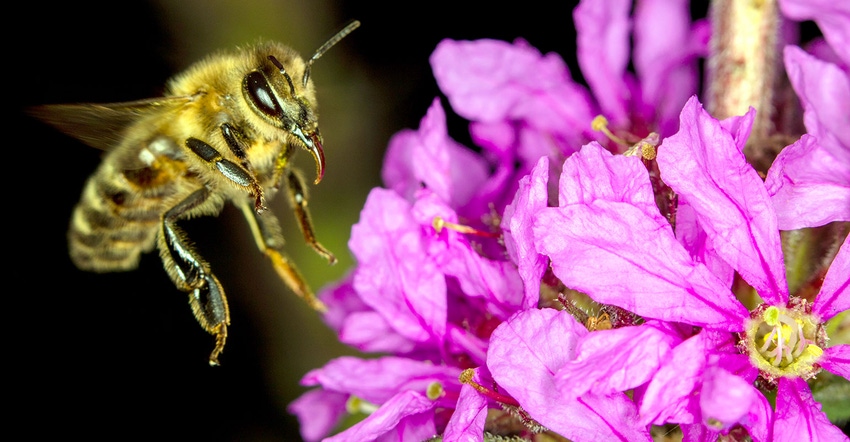August 13, 2020

In the fight against viruses that have devastated honeybee colonies in recent years, an LSU AgCenter researcher is eyeing a physiological pathway as a potential solution.
Entomologist Daniel Swale is working to learn more about a pathway that carries potassium ions through insects’ bodies and could help combat ailments such as deformed wing virus in bees.
“We’ve found a new physiological pathway that can help boost bees’ immune system,” said Swale, who recently was awarded a grant from the U.S. Department of Agriculture National Institute of Food and Agriculture to study the pathway in bees. He also has received a second NIFA grant to study a similar pathway in aphids and stink bugs that could offer a way to control populations of the pests, which wreak havoc on agricultural crops.
In the bee project, Swale is focusing on the potassium-transport channel’s connection to antiviral defenses.
Much research has been done on factors negatively affecting bee colonies, Swale said, such as being exposed to pesticides and having limited foraging opportunities. But less is known about how to take advantage of bee physiology to mitigate the damage caused by those stressors.
“This study aims to bridge knowledge gaps that increase our understanding of bee immune system regulation as well as reveal novel intervention points to increase colony health and sustainability,” Swale said.
He’s collaborating with Troy Anderson, an expert in insect biochemistry and toxicology with the University of Nebraska, and Michael Simone-Finstrom, a USDA honeybee biologist.
“Troy and Michael bring significant expertise to this project that make our team uniquely qualified to address a range of questions that can lead to the development of products to reduce the burden of bee viruses to the apiculture industry,” Swale said.
The aphid and stink bug project focuses on targeting channels that transport potassium ions across cell membranes as a way to interfere with salivary gland function — which would prevent the pests from feeding on crops and ultimately kill them. In that effort, Swale is working with AgCenter entomologist Jeff Davis and AgCenter Medicinal Plants Lab researcher Zhijun Liu.
“They are world experts on integrated pest management and chemical solubilizers, which are critical components of the project that will facilitate translation from fundamental research into commercialized products for pest control,” Swale said of Davis and Liu.
The channels could represent a new target site for chemical control products, Swale said.
Changes in global weather patterns have caused aphid and stink bug populations to spike, making the research all the more urgent, he said.
Source: The LSU AgCenter, which is solely responsible for the information provided, and wholly owns the information. Informa Business Media and all its subsidiaries are not responsible for any of the content contained in this information asset.
About the Author(s)
You May Also Like






